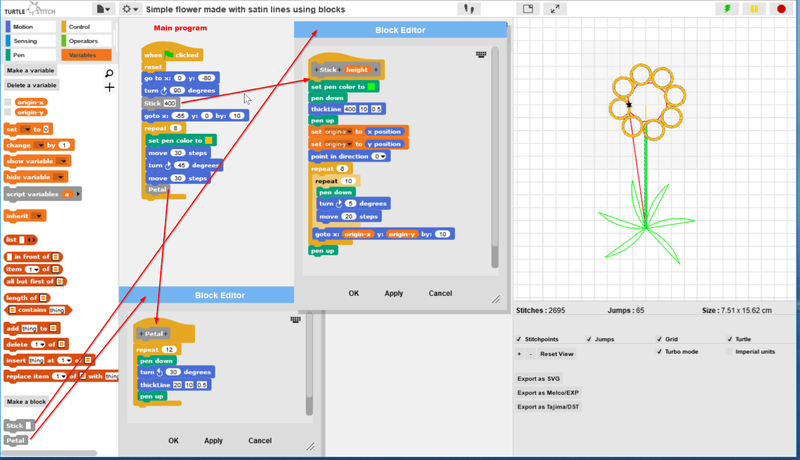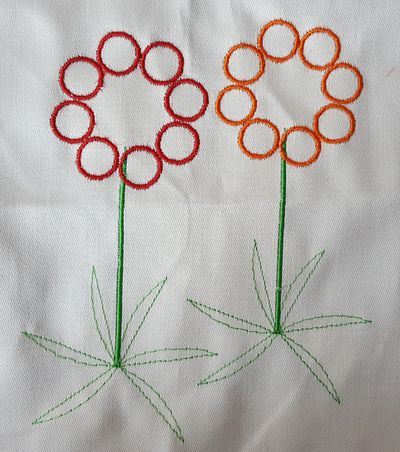Turtlestitch
Introduction
TurtleStich is a programmable embroidery platform created by Andrea Mayr-Stalder (Artist, Educator, Project Lead), Michael Aschauer (Artist, Lead Developer)
According to Turtlestitch - Coded Embroidery (Retrieved Aug 2018), “Turtlestitch is based on a browser-based educational programming language (Snap!) to generate patterns for embroidery machines. It is easy to use, requiring no prior knowledge in programming, yet powerful in creating nowels patterns for embroidery. It is usefull for designers to experiment with generative aesthetics and precision embroidery as well as tool for innovative workshops combining an introduction to programing with haptic output. Turtlestitch uses Snap!s "pen module" which it interprets as a needle and transforms its output into widely-used embroidery file formats.”. An alternative description is provided in the official FAQ: “TurtleStitch is a platform to generate patterns for embroidery machines. Technically, it's based on Snap!, a browser-based educational programming language. It is easy to use, requires no prior knowledge in programming, and is a powerful tool to create personalized patterns for embroidery. It is useful for designers for experimenting with generative aesthetics and precision embroidery, as well as tool for innovative workshops combining an introduction to programing with haptic output.”
Turtlestitch does require programming knowledge. However, it can be acquired through the use of this platform as one its main goal is to provide a motivating means to teach computer science principles.
Programming education
Turtlestitch allows teaching programming by intuition or using a more "scientific approach" that includes mathematics, software principles, optimized algorithms, etc.
The following was done during a faculty meeting without thinking about any math. Just some trial and error of angles and distances. A main program will draw call a "block" that will draw the stick, it then will call 8 times a block that draws a petal and shift/rotate in between.
Result:
Basic Functionality
- Turtlestitch is available as online browser-based environment.
- The program can export to .DST (Tajima) .EXP (Melco) low level embroidery formats and SVG. The former can be translated to other proprietary embroidery formats, using a converter. The latter could be imported to other embroidery programs, e.g. InkStitch.
Tips
- Before exporting, you must execute the code, i.e. the software will export the drawing that is seen on the canvas.
- To create satin stitches, use Motion -> thickLine (length, width, density of the zigzag)
- Some color change information is missing in the DST file. Workaround: Either convert to another format or edit the file in a converter or embroidery design program.
Links
Official
- http://turtlestitch.org/ Project site.
- gallery of Turtlestitch programs
- FAQ
- Snap! User Manual
For developers
Blogs, wikis, etc.
- Steam Coding/Turtle Stich Blog by Jennifer Lin,
- TurtleStitch Wiki. As of Aug 2018, this is empty.

